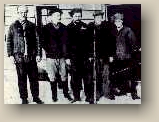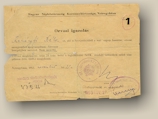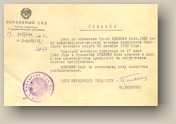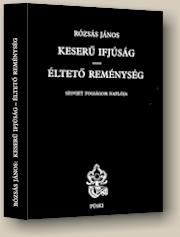|
|

Béla Keményfi, a former Gulag prisoner, wrote a book
called - ‘Hungarian
Scouts a Beyond the Arctic Circle’ (1989). It is a shocking
documentary of the time. At sixteen years of age its author was
practically a child when, following a short term as prisoner of war,
he was interned in the Hungarian-Soviet Interior Agencies’ prison.
He was shot in the spine while attempting to escape, but even the
fact that he had been crippled did not prevent Soviet authorities
from condemning him, and sending him through the hell of detention,
penitentiary, and forced labor camps. In 1953 the Supreme Court of
the Soviet Union reviewed the 1946 sentence of the military court
and rehabilitated Bela Kemenyfi.
Photograph and documents below are property of Bela Kemenyfi: |
|
 |
 |
 |
|
 zoom
zoom |
 zoom
zoom |
 zoom
zoom |
Hungarian and Russian prisoners, from left
to right: Vaytov, Horvath, Matushinka, Butin, and Nikolai. Sever,
1952. |
Medical certificate and ID paper issued by
the Hungarian People’s Republic. November 1953.
 |
Rehabilitation document. December 30, 1960.
 |
|
|
|
|






